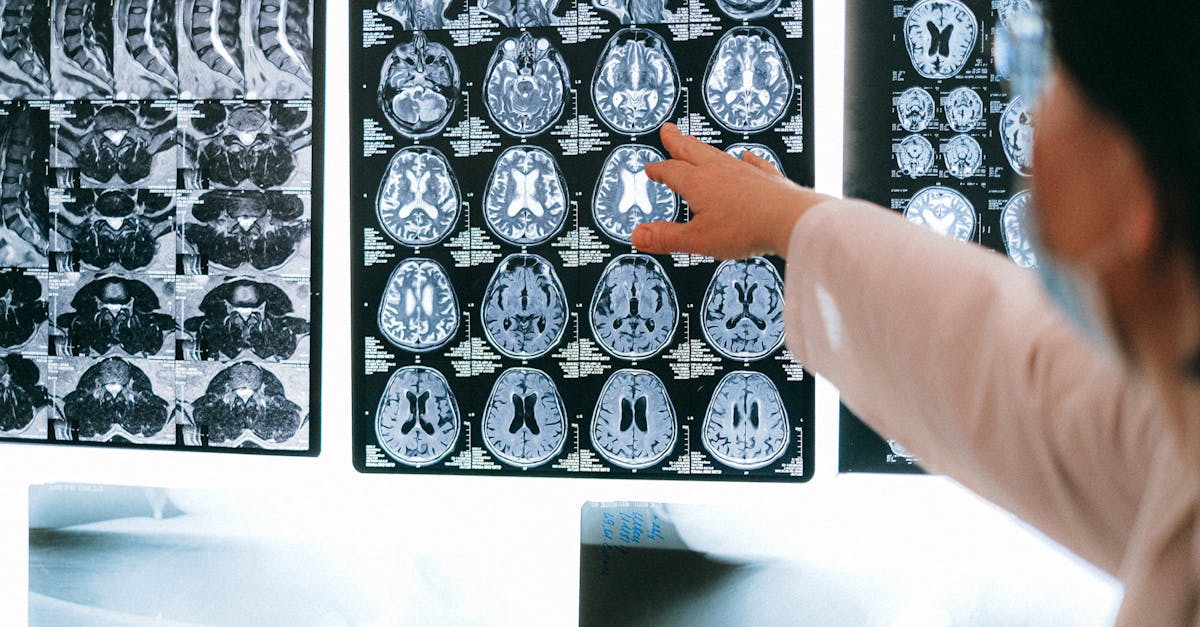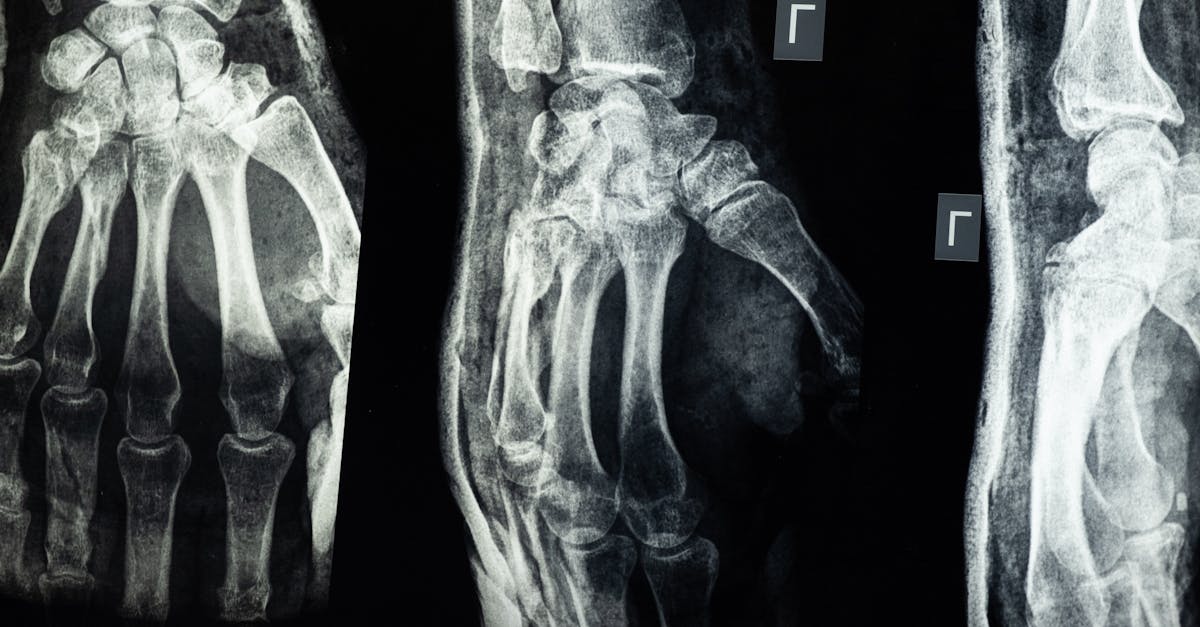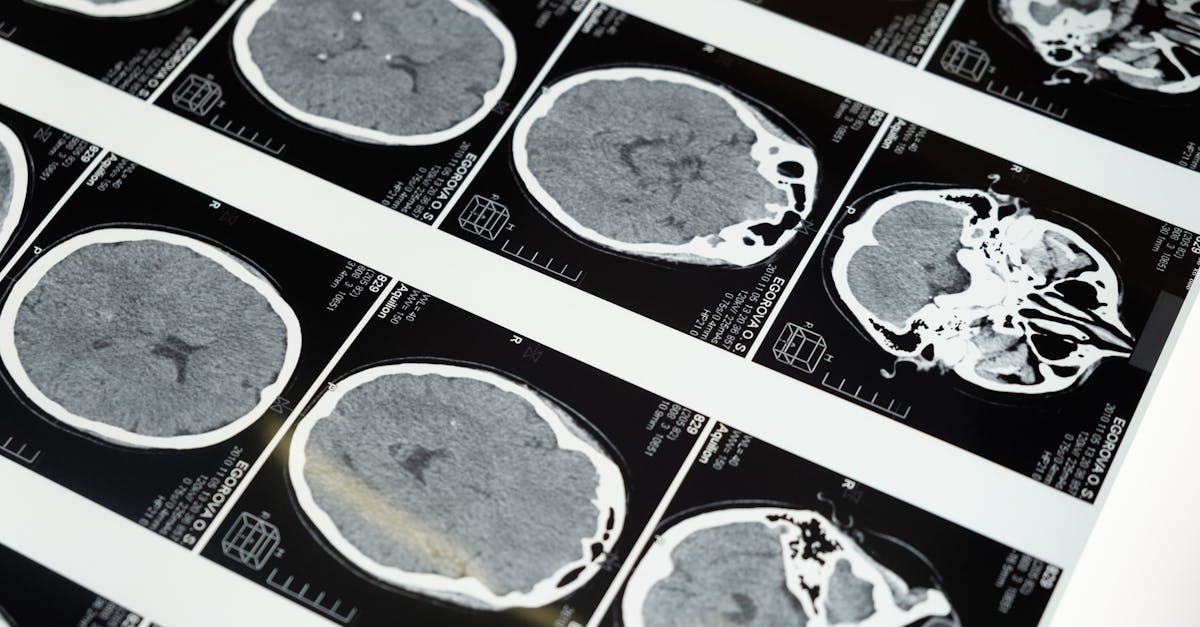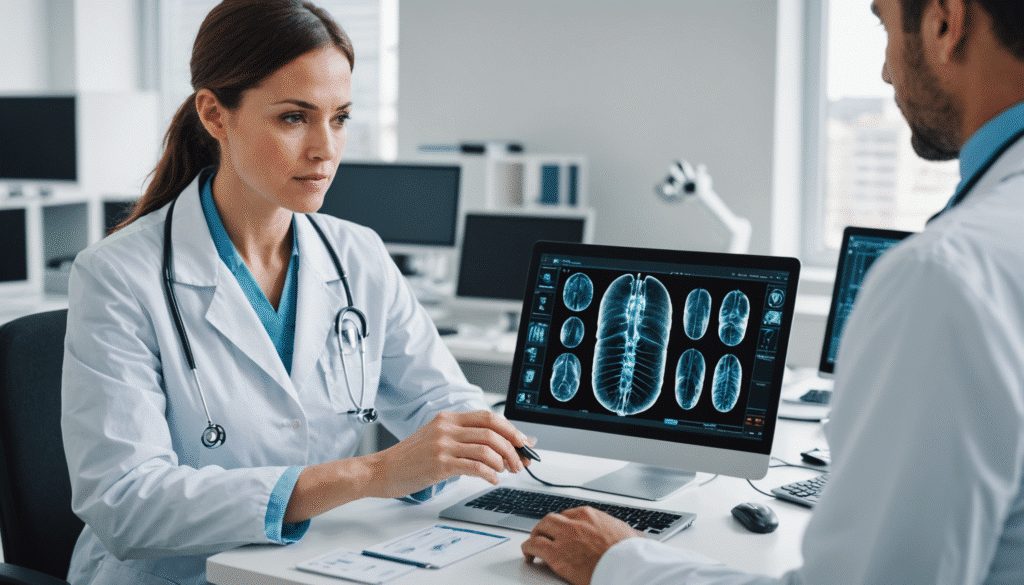The collaboration between radiologists and clinicians represents a crucial challenge for the improvement of medical care. This synergy allows for optimal patient management by bringing together complementary skills and fostering an essential exchange of information. At the heart of modern medicine, imaging occupies a predominant place, enabling precise diagnoses and guiding treatments. Nevertheless, the effectiveness of this collaboration depends on several factors, which we will explore in the following sections.
Technological advances and the increase in imaging techniques, such as MRI and CT scans, have also changed the game. They impose a constant adaptation of practices and a need for increased coordination between the various health stakeholders. Through this article, we will examine the impact of this interprofessional collaboration and highlight the benefits it can bring to patients.
The foundations of collaboration between radiologists and clinicians
The basis of a successful collaboration lies in clear and effective communication. Radiologists, as imaging specialists, must be able to convey precise and relevant information to clinicians, while the latter must know how to ask the right questions to guide the imaging examination. This sharing of information is essential to guarantee the quality of the diagnosis and associated care.
Establishing effective communication
To establish productive communication, several practices can be put in place. On the one hand, multidisciplinary consultation meetings (MCMs) allow for discussions of complex cases, thus promoting a better understanding of clinical issues. On the other hand, the use of integrated information systems facilitates the sharing of patient data, making medical history and previous examination results accessible.
Continuous education
Continuous education is another important vector for strengthening this collaboration. Radiologists and clinicians need to stay informed about developments in their respective fields. This can be achieved through training, conferences, or dedicated seminars. A clinician informed about new imaging techniques will be better able to prescribe the appropriate examinations, while a radiologist aware of clinical advances will better interpret the images they produce.

The benefits of interprofessional collaboration
The collaboration between radiologists and clinicians should not be seen merely as an organizational necessity; it also brings numerous clinical benefits. By making the diagnostic process smoother and reducing waiting times, this synergy ensures better patient management. Even better, it can contribute to reducing medical errors.
Improvement of diagnosis
One of the main advantages of effective communication is the improvement of diagnoses. When radiologists and clinicians work together, they can discuss examination results in real-time. This allows for rapid and accurate interpretation of images, which is essential in emergency situations. For example, during a suspected heart attack, every minute counts. A quick interpretation and effective communication between the clinician and radiologist can mean the difference between life and death.
Reduction of medical errors
Diagnostic errors can have serious consequences. By closely collaborating, radiologists and clinicians can review cases together and discuss treatment options, thus minimizing the risk of errors. Establishing common protocols is also useful to standardize procedures and reduce variations in practice.

The impact of new technologies on collaboration
The digital revolution and technological advances are bringing significant changes to medical practice, particularly in the relationships between radiologists and clinicians. Medical imaging management systems, artificial intelligence, and data analysis software are altering the way information is shared and analyzed.
Use of artificial intelligence
Artificial intelligence (AI) is playing an increasingly significant role in the field of medical imaging. It offers powerful analytical tools that assist in interpreting images, detecting anomalies, and providing preliminary diagnoses. Radiologists can thus focus on more complex cases, while clinicians benefit from quick access to critical information. The introduction of AI in imaging processes could also reduce the risk of human error, improving the accuracy of diagnoses.
Tele-imaging platforms
Tele-imaging platforms allow radiologists to share images and reports in real-time with their clinician colleagues. This accessibility facilitates consultation and sharing of expertise, making the decision-making process more dynamic. Thanks to these tools, even small healthcare facilities can benefit from access to specialized expertise, ensuring equitable care for all patients.
Challenges to overcome for successful collaboration
Despite the many advantages of collaboration between radiologists and clinicians, several challenges must be addressed. These obstacles, whether organizational, technological, or communication-related, can hinder the effectiveness of patient care.
Communication problems
Ineffective communication remains one of the main barriers to collaboration. Medical jargon, differences in terminology, and frequent interruptions can lead to misunderstandings. Clarity and precision are therefore essential. Consequently, training on interprofessional communication can prove beneficial.
Resistance to change
Changes in the way of working, due to the introduction of new technologies or practices, can evoke resistance. It is necessary to train and raise awareness among the entire medical staff about the benefits of these changes so that everyone can take advantage of them and adapt positively.

Future perspectives and recommendations
To improve collaboration between radiologists and clinicians, it is essential to anticipate upcoming changes in the healthcare field. Continuous education, the adoption of technological tools, and encouraging knowledge sharing will be key elements in strengthening this professional synergy.
Encouraging interprofessional training
Interprofessional training programs can promote a better understanding of the roles and responsibilities of each party. Such initiatives will help build trust-based relationships, grounded in mutual understanding and respect for each other’s skills.
Investing in technology
Healthcare facilities must invest in technologies that promote collaboration. Acquiring image management software and communication tools could facilitate exchanges between professionals and improve the quality of care. By integrating these tools, medical teams will be able to optimize their practices and better respond to patient needs.













